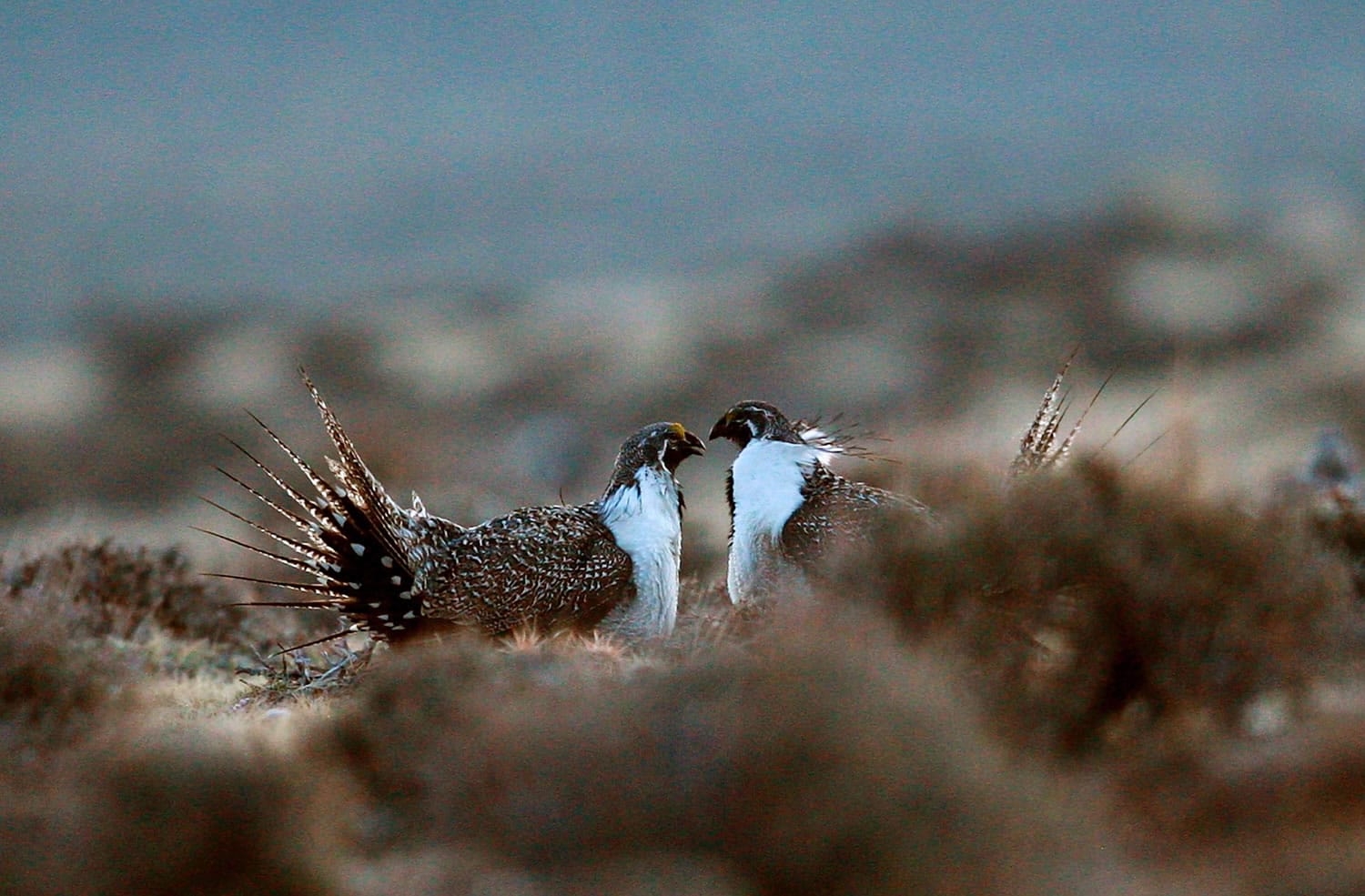The Obama administration and Gov. Kate Brown joined with Oregon ranchers to celebrate agreements they all hope will help keep the sage grouse off the endangered species list.
The agreements announced Friday in Bend, Oregon, give ranchers incentives to protect sage grouse and their habitat on 5,500 square miles of private land in central and southeastern Oregon.
Interior Secretary Sally Jewell, the governor, and Agriculture Deputy Undersecretary Ann Mills praised the spirit of cooperation the agreements represent, and expressed their hopes that both sage grouse and family ranches would thrive.
“To quote an Oregon rancher, ‘What’s good for the bird is good for the herd,”‘ Jewell said.
Brown noted her budget has $4 million committed for sage grouse programs, adding, “This plan not only assures the wellbeing of a small bird that makes its home in the high desert of central Oregon, but also the wellbeing of the people and communities that share that home.”
Lake County Rancher John O’Keefe, president elect of the Oregon Cattlemen’s Association, said the agreements would help his family ranch continue into the fourth and fifth generations.
The U.S. Fish and Wildlife Service says the agreements signed last week with soil and water conservation districts covering Crook, Deschutes, Lake, Union, Grant, Baker, Harney and Malheur counties are the first for such a wide area.
The Obama administration has been announcing a variety of conservation agreements as the Sept. 30 deadline approaches for deciding whether to propose the sage grouse for Endangered Species Act protection. Conservation agreements were reached last year with nine ranchers in Wyoming. In Nevada this week, Barrick Gold Corp., the world’s largest gold mining company, agreed to establish a conservation bank, which gives it greater flexibility in operations in return for enhancing critical habitat.
Greater sage grouse range across 11 Western states and two Canadian provinces. Oil and gas drilling, wildfires, livestock grazing and other activities have consumed more than half the bird’s habitat over the past century, and their numbers have declined more than 90 percent.
Congress has barred the federal government from spending money on rules to protect the bird. But Fish and Wildlife says it is still bound by court order to reach a decision by September on whether a listing is warranted.
Under terms of the agreement in Oregon, ranchers who take specific steps to protect sage grouse and their habitat will be sheltered from more stringent restrictions if the bird comes under Endangered Species Act protection.
Federal biologists would come to their land to assess what threats were posed to the bird. Protection steps might include changing when and where cattle graze so they don’t infringe on sage grouse breeding, rearing and feeding areas; cutting down juniper trees where birds of prey roost; controlling non-native grasses that spread wildfire; putting ramps in water troughs so birds that fall in can climb out; and putting plastic flagging on fences so birds are less likely to fly into them and die.
The U.S. Natural Resources Conservation Service has committed $9 million to sage grouse programs in Oregon, and the Oregon Cattlemen’s Association is working on bills in the state Legislature to generate $1 million to $2 million more. Proposals include a $1 fee on each head of cattle sold, a birdseed tax and tapping lottery funds.
A similar agreement covering about 990 square miles of state lands in southeastern Oregon leased for grazing is expected to be signed next month.
Oregon Cattlemen’s Association executive director Jerome Rosa said many ranchers are signing up in hopes of keeping sage grouse off the endangered species list. But he noted that Oregon only accounts for about 5 percent of sage-grouse habitat in the country.
Dan Morse, conservation director of the Oregon Natural Desert Association, said the success of the agreements will depend on the specific measures federal biologists prescribe to protect sage grouse. Even more important will be the conservation measures the U.S. Bureau of Land Management comes up with for the 23,000 square miles of sage grouse habitat it oversees in Oregon, Morse said. A final plan is due later this spring.



